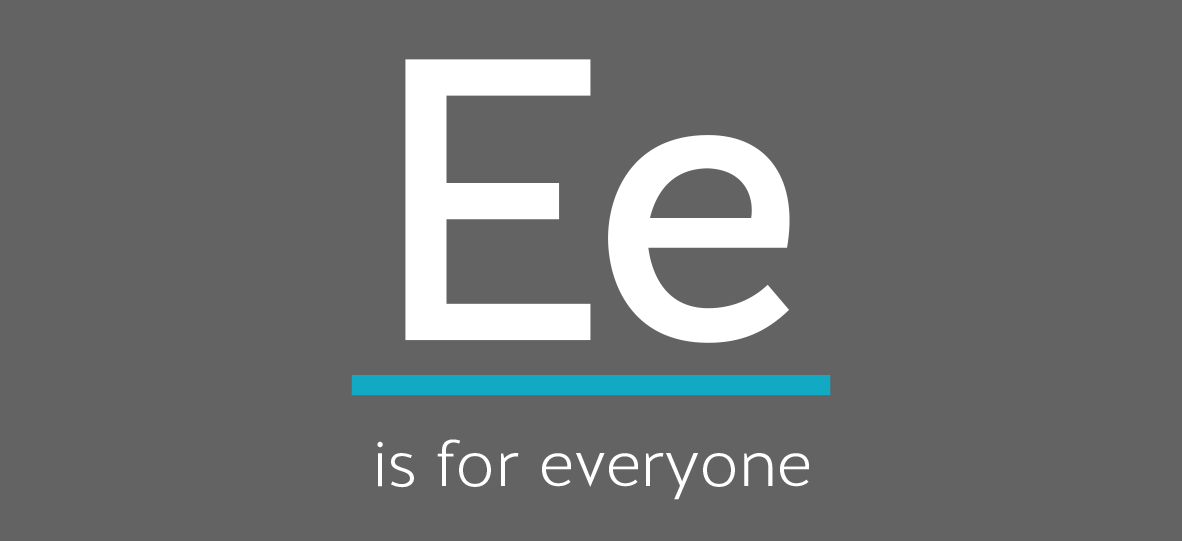
E is for everyone
When you think about creating communications for your target audience, make sure that you remember everyone. One in 6 people in the UK has a hearing loss and one in 30 has a visual impairment. This is much higher if your audience is 65+. Don’t give them a tiny font they have to squint to read or produce a fantastic video but forget the subtitles! Why would you limit your audience like that?
The diversity and needs of your audience should be reflected in your design and a good creative agency will help you achieve this. Thinking of everyone does not limit creativity but it will increase your chances of connecting and engaging with your audience.
Here are some basic guidelines:
Font size
Some fonts work better in print than online. Generally, sticking to a single font family is better for accessibility. Avoid LARGE BLOCKS OF CAPITAL LETTERS or chunks of text in italic as these are more difficult to read. 11pt text in a printed document is comfortable for most people, 12pt makes it really easy to read and 18pt is recommended for people with a visual impairment. No doubt you’ll have agonised about what to say so don’t fall at the final hurdle!
Text
Text should be left justified and written in sentences with capitals at the beginning and full stops at the end for ease of navigation. Using headings, bullet points and highlight key information to break up your copy and make it easier for people to find what they’re looking for. A good copywriter can help you with this. Any action points or contact information should stand out and be clear.
Colour contrast
It’s important to choose colours that reflect your brand personality, but you also need to ensure they’re accessible for your audience. For example, white text on a yellow background is very hard to read compared to black text on a white background. For digital communications, colour contrast analysers can be a helpful aid to assess how your colours work together on screen. High contrast is always clearer.
Digital content
Whilst we’re on the subject of digital, when producing video, always add subtitles and provide a transcript to ensure the video is accessible. Subtitles also benefit people who want to watch in a noisy environment, public transport or an open plan office! [Or sometimes when drying their hair in the morning while watching youtube – just saying…]
On your website, add captions (or alt tags) to images, maps and diagrams to enable visually impaired users to understand their context. Screen reading software will read the descriptions out to the user.
Images
When choosing photos use a variety of images to represent all of your audience. Think about different age groups, a range of ethnicities and include people with visible disabilities. Your images can represent the world as it is and allow more people to see themselves and therefore think of your product or service as being for them.
Images can also really help if English isn’t the readers first language by using appropriate images to give them context for what the text is going to say. For example a picture of vegetables might help someone to know a recipe is for a savoury dish, rather than a dessert!
Contact details
Give people a range of ways to get in touch with you. If they’re not confident on the phone, or have trouble hearing then an email or postal address is useful. It all comes back to knowing your audience.
Format
Depending on your audience you could produce materials in other formats such as:
- Another language like Urdu, Polish or Bengali.
- Large print, audio or braille for people with a visual impairment.
- Easy-read for people with learning difficulties.
- Video which is signed and subtitled for people who are deaf or hard of hearing.
Creating design that works for everyone is something we’re passionate about and have lots of experience in. If you’re looking for guidance in this area, please get in touch, we’d love to talk to you (or sign if necessary!)
Jo
The stats
- There are 11 million people with hearing loss across the UK, that’s around one in six of us (source Action on Hearing Loss)
- Over two million people in the UK live with sight loss. That’s around one person in 30 (source RNIB)
- Approximately 1.5 million people in the UK have a learning disability (source FLP)
- Around 6% of children [in the UK] are disabled, compared to 16% of working age adults and 45% of adults over State Pension age (source gov.uk)
